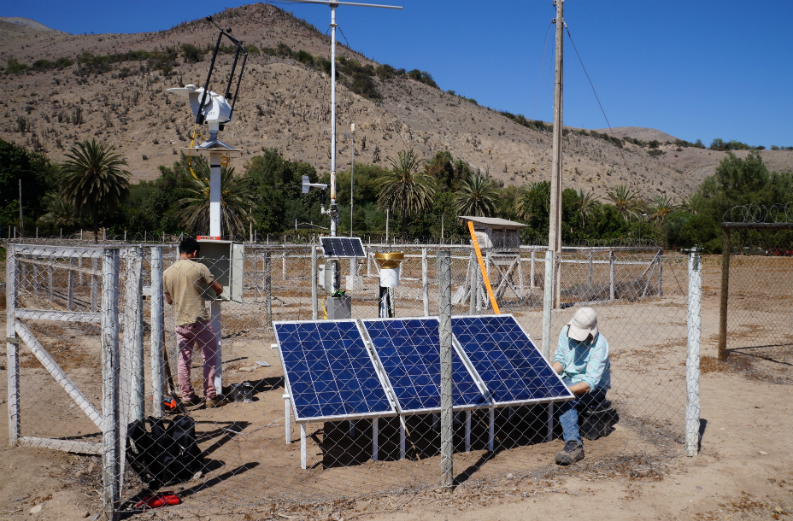"To estimate the radiation that potentially falls on PV panels in a solar park it is necessary to understand the global radiation received by the sun on a horizontal surface. However, this is not only composed of rays coming directly from the sun, but also the diffuse radiation coming from the rest of the sky and atmosphere, mainly dispersed by clouds.
For certain solar projects, it is of particular importance to measure the direct radiation as a separate component, since the diffuse radiation is not always usable (as in the case of solar concentrators). Therefore, it was necessary to install, besides the global radiation sensors, sun trackers that allow us to mount sensors for measuring direct and diffuse radiation." Thus explains Cristian Orrego, CEAZA computer engineer and deputy director of the project.
The FIC "Platform Solar Prospecting Coquimbo Region: Phase I" project, implemented by professionals of the CEAZA science center, has set up a network for measuring solar radiation at nine sites in the Coquimbo Region to generate the first year of data of the actual radiation received at each location.
"This will lower the margin of uncertainty in the economic evaluation of projects of solar plants," they say at the science center.
The sites where measurements are being made are Punta Colorada, La Serena (Romeral), Vicuña, Andacollo, Ovalle, Combarbalá, Mincha, Illapel and the Paso de Agua Negra."This is the basis of the sun network information from the mountains to the sea and from North to South in the region. With this dispersion of data we will be able to generate and validate future regional solar energy maps."
There are also resource assessment efforts on the part of other institutions; but not as densely, and within a single region, as the nine stations installed by CEAZA in Coquimbo. "This serves to deliver more precise mapping, for example," explains Orrego.
Most of the stations with global radiation measurements began operating last year. The summary data are published monthly in the climate bulletin of CEAZA. "All these data allow us to know how much solar radiation exists at every moment of the day."
“Plataforma de Prospección Solar Región de Coquimbo: Fase I” is funded by the Regional Government of Coquimbo, through the Innovation Fund for Competitiveness (FIC-R).
In 2014 Cristian Orrego and his colleague Cristóbal Juliá visited Kipp & Zonen’s head office in the Netherlands for training on the equipment for the project. Read more here.